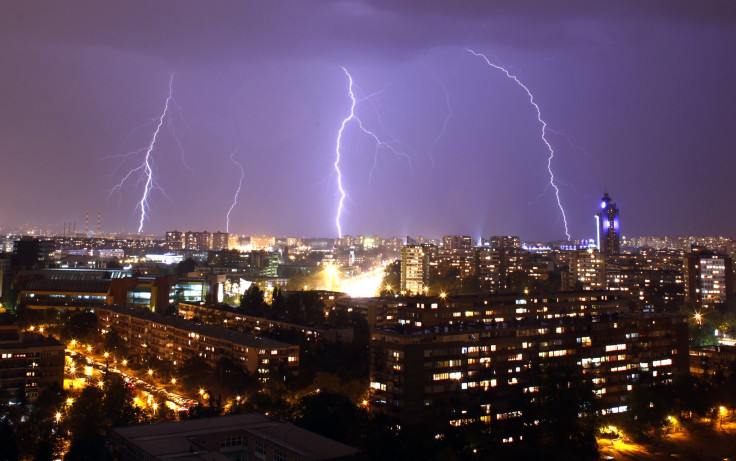Let There Be Lightning: NASA-Led Football-Sized Satellite To Uncover Mysteries Of Lightning On Earth

In mid-November, NASA will launch a small satellite into space to study lightning and its effects on the atmosphere, the U.S. space agency announced Friday. The mission will also examine powerful and energetic bursts called terrestrial gamma ray flashes, or TGFs, which may be related to lightning.
The football-sized satellite called Firefly is funded by the National Science Foundation. It is a kind of cubesat, which is very small satellite that allows for space science explorations with a comparatively inexpensive price tag.
“We can do great science with these small missions," Doug Rowland, the principal investigator for Firefly at NASA's Goddard Space Flight Center in Greenbelt, Md., said in a statement. “Firefly will gather up to a year of observations on the mysterious workings of lightning. Lightning is so familiar we tend to take it for granted, but we really don’t know the details of how it works — even though it is a critical part of the global electric circuit, and has obvious social and technological effects.”

According to scientists, the globe experiences lightning some 50 times a second, meaning that there is always a lightning flash somewhere on Earth. Although very little is known about this ubiquitous phenomenon, it is intimately connected to life on the planet.
Lightning can create intense radiation that can generate antimatter and gamma rays within TGFs just a few miles off the ground.
“Gamma rays are thought to be emitted by electrons traveling at or near the speed of light when they're slowed down by interactions with atoms in the upper atmosphere,” Therese Moretto Jorgensen of NSF said in a statement. “TGFs are among our atmosphere's most interesting phenomena.”
Prior to the discovery of TGFs in the 1990s, scientists thought that electrons moving this fast could only be generated near much larger bodies, such as stars, galaxies or black holes. But now, scientists have hypothesized that some lightning on Earth is triggered by an electron avalanche, which is a runaway chain reaction that pushes electrons up to these incredible speeds.
According to scientists, understanding the mechanism for what accelerates the electron beams near Earth will help them better understand how the same process happens throughout the rest of the universe.
"The idea that some of the lightning overhead may be triggered by the same processes that happen in supernovas and cosmic particle accelerators is mind-blowing," Rowland said. NASA said the window for Firefly launch will open on Tuesday, and it is scheduled to launch with 27 other cubesat missions.
© Copyright IBTimes 2024. All rights reserved.






















